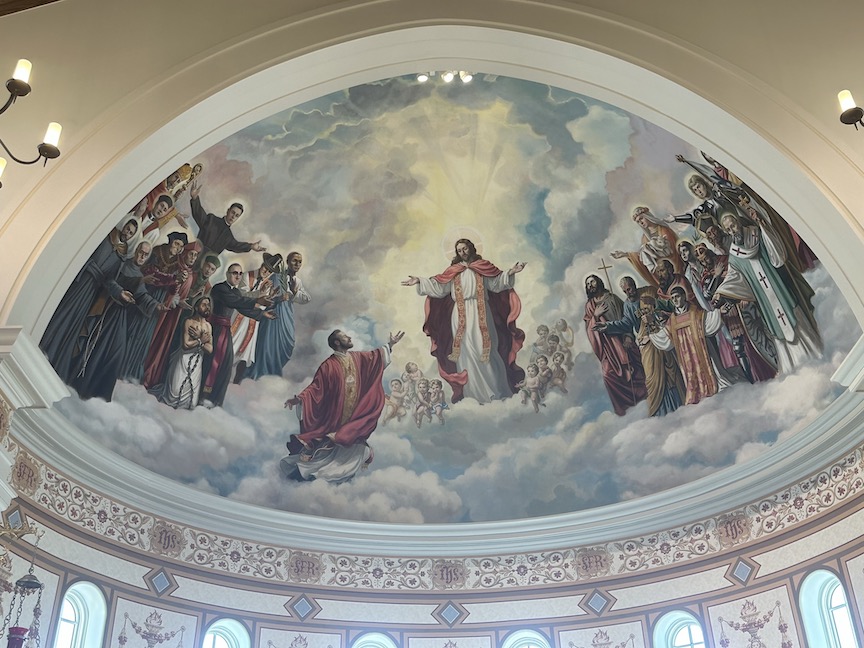
A mural appearing on the dome of the roof at the Blessed Stanley Rother Shrine in Oklahoma City introduces Catholic pilgrims to Christian martyrs killed for practicing their faith. The mural shows Stanley Rother in a red robe kneeling before Jesus Christ while other martyrs look on. Photo by Teresa Bergen.
By Teresa Bergen
Jason Spoolstra stands with his back to a mural of Jesus welcoming Stanley Rother into heaven. He is introducing a tour group to more than 20 martyrs depicted on the mural.
“We’re going to start on the right,” says Spoolstra, the Rother shrine’s director of pilgrimage. “The gentleman closest to Jesus, he’s holding the long, skinny cross. That is Saint John the Baptist, a relative of Jesus, son of Elizabeth, cousin to Mary. Last of the prophets. Baptized Christ.”
He flawlessly names each, from virgin martyrs like Saints Agnes and Maria Goretti who died for their chastity, to priests like Saint John of Nepomuk, drowned at the king of Bohemia’s behest for not betraying the queen’s confessional secrets. Spoolstra describes each martyr without taking a single peek at the mural.
Blessed Stanley himself is crouched on a cloud, his left hand reaching up toward Jesus. “You’ll notice that Blessed Stanley is wearing a red vestment,” Spoolstra says. “That’s because he is celebrating his own martyrdom.” As the first North American-born martyr, Blessed Stanley has his own shrine in Oklahoma City, which just opened in February 2023. “Last but not least,” says Spoolstra, “the most important thing is Blessed Stanley himself. Blessed Stanley’s remains are laid to rest right here in the altar.”
Except his heart. It was removed and left in Santiago Atitlan, Guatemala, where he was shot and killed on July 28, 1981. Rother was ministering to the indigenous Tz’utujil people. He was one of ten priests shot that year, apparently by right-wing extremists who viewed the priests’ work with the poor as helping leftists. Now Stanley has an enormous new shrine complex that includes a church, chapel, museum, pilgrimage center and grounds.
Shrine tourism is well known in places like the Sanctuary of Our Lady of Lourdes in France and Shrine of Fatima in Portugal, and obviously the Holy Land. Europe’s Camino de Santiago, or Way of Saint James, is a popular walking pilgrimage with Catholics and non-Catholics. Shrine tourism is alive and well in North America, too, albeit in sometimes less glamorous places, like the outskirts of flat and sprawling Oklahoma City.
What is a Shrine?
A shrine is a place that has developed a reputation for connecting people to God. “It has to have an identity of being visited as a place of prayer, a place that people want to journey to as pilgrims,” says Carol Bezak, director of the National Shrine of Our Lady of Mt. Carmel in Middletown, New York and president of National Association of Shrine and Pilgrimage Apostolate (NASPA).
There’s a hierarchy of shrines, she explains. First, a local diocese can designate a shrine as a place of pilgrimage. After the shrine is well established—say, maybe ten years—the diocese can apply to the National Conference of Catholic Bishops to advance it to national status.
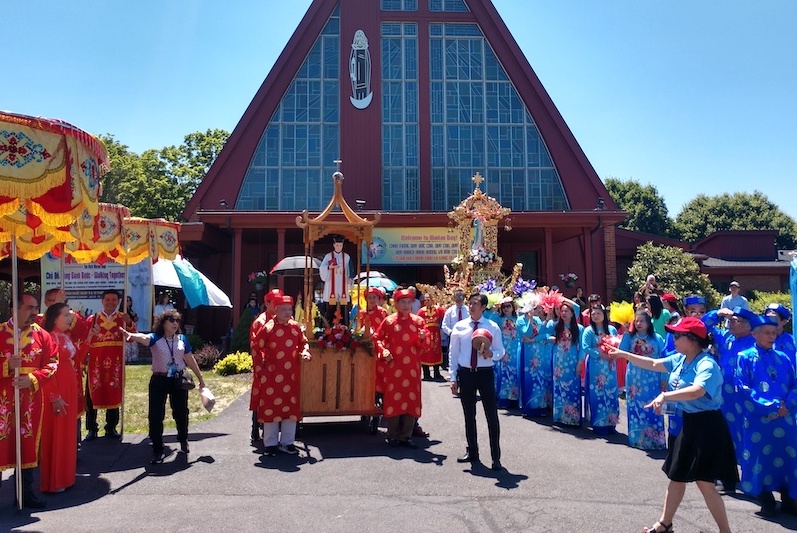
The National Shrine of Our Lady of Mt. Carmel in Middletown, NY attracts pilgrims from the Eastern U.S. and Canada. The shrine is maintained by the Carmelite Order which began more than 900 years ago in the Holy Land. Photo courtesy of the National Shrine of Our Lady of Mt. Carmel
Why a shrine winds up in a particular area is not always obvious. Sometimes there’s a clear connection—like Brother Stanley Rother being from the town of Okarche, 40 miles northwest of Oklahoma City, or the Mohican/Algonquin Saint Kateri Tekakwitha—lauded for her charity, chastity and devotion to Christ—having a shrine in Montgomery County, New York, where she was born. But how did Saint Therese of Lisieux, the very popular French saint known as the “Little Flower” wind up with a shrine outside Juneau? Turns out that this saint renowned for doing every small thing with great love is the patron saint of Alaska.
Bezak says sometimes the placement of a shrine stems from residents’ devotion to a favorite saint. For example, the National Shrine of Our Lady of Czestochowa in the Polish-American community of Doylestown, Pennsylvania houses a reproduction of the famous Polish Black Madonna. Poles prayed to Mary during an invasion by Swedes in 1655, and credit her for saving their country. The image of the Black Madonna became a symbol of national unity. She’s black with soot because people have been burning votive candles in front of her for centuries.
However a shrine winds up in a locale, visitors are hoping to tap into a certain feeling. “It has to have an identity of being visited as a place of prayer, a place that people want to journey to as pilgrims,” said Bezak. And sometimes visitors are searching for something extra. Women yearning to conceive visit the National Shrine of Our Lady of La Leche in Saint Augustine, Florida praying for fertility. In New Orleans, people have been leaving their false teeth, glass eyes and prosthetic limbs at the Saint Roch Cemetery Chapel since the late 1800s, as a thank you for healing. The original Saint Roch ministered to 14th-century plague victims. Desperate New Orleanians built a temple in his honor during a yellow fever epidemic in 1875.
The State of Shrine Tourism
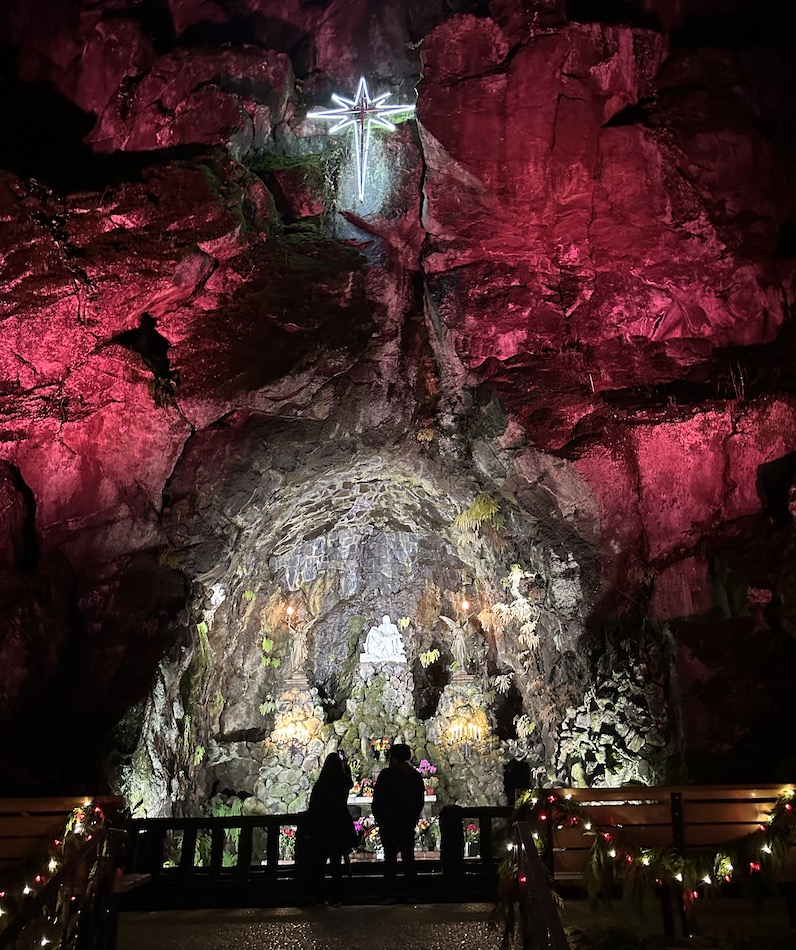
Portland’s Festival of Lights starts the Christmas season in appropriate fashion with 2,000,000 lights along forested trails leading to an altar hewn deep into a basalt cliff. Photo by Teresa Bergen
Every December, approximately 80,000 people flood into the National Sanctuary of Our Sorrowful Mother in Portland, Oregon. More than 2 million Christmas lights glint from trees along forested pathways. The sounds of choirs ring out as they sing joyful Christmas songs. Kids can touch the coarse fur of goats in the petting zoo or laugh at the puppet shows. The smell of hot chocolate wafts through the cold and rainy Portland night. The annual Festival of Lights is a huge success story for a shrine—especially in a city not known for churchgoing. Ambrose Mayer, a member of the Servite Order, built the original Catholic shrine — an altar cave carved into a 110-foot basalt cliff – in 1924, to fulfill a childhood promise to God after his mother almost died giving birth to his little sister. It’s named for Mary, the sorrowful mother of Jesus.
But many shrines aren’t well known, even to the local community. Bezak is the first layperson to direct the National Shrine of Our Lady of Mt. Carmel. “People in the general area knew nothing about the shrine,” she explains. “The question I was asked at the time was, do you think you can make the shrine known?” Bezak’s long career in parish work gave her confidence that she could raise the shrine’s profile.
Our Lady of Mount Carmel was the name given to Mary in her role as patroness of the Carmelite order, dating back to a group of 12th-century hermits living in the Holy Land. The shrine Bezak now oversees was first established at Our Lady of the Scapular Church in Manhattan. The shrine at that time was making scapulars—protective amulets identified with Our Lady of Mount Carmel, worn around the neck—for the armed forces during WWII. In 1991, the National Shrine of Our Lady of Mount Carmel was transferred to Middletown NY, where an order of Carmelite friars lived.
With almost a million visitors per year, the National Basilica in Washington, DC is America’s largest and most popular shrines. “You could spend a week there and not see it all,” Bezak says. People come for Byzantine architecture, the world’s largest collection of contemporary religious art and the shrine’s many events. The Maria Stein Shrine of the Holy Relics in Maria Stein, Ohio is also popular, largely because of its collection of more than 1,200 relics of saints.
Shrines often have financial challenges. Unlike parishes, shrines lack enrolled members who tend to donate regularly. Maintenance is steep—in addition to building upkeep, many shrines have huge grounds. Security is a growing concern. Some saints, such as missionary Junipero Serra, aka the Father of the California Missions, are being reevaluated and found guilty. Such was the case in 2020, when a mob of activists in San Francisco sprayed red paint on a statue of Serra and tore it down.
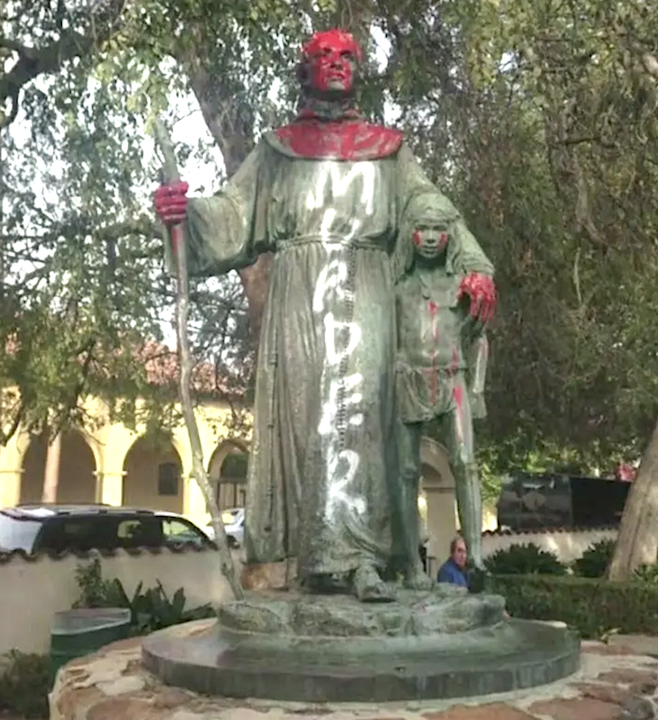
Canonized in 2015 by the Vatican, Junipero Serra was an 18th-century Franciscan priest who built nine missions throughout California. Following the death of George Floyd in 2020 and the subsequent rioting by Black Lives Matter, statues of the prelate, many close to missions he helped build, were defaced or torn down. There is no evidence he ever committed a murder.
Other shrines, however, have no problems raising capital. The hulking new Stanley Rother Shrine cost more than $50 million to build. It opened debt-free thanks to Catholic donors.
In September, a new 4 million dollar museum opened at the National Shrine of Saint Elizabeth Ann Seton in Emmitsburg, Maryland. Raising money depends on how much a saint is loved and revered. Mother Seton’s struggles—bankruptcy, the deaths of her husband and children, being shunned for joining the Catholic Church—seem to resonate with people going through hard times.
The Saints Go Marching In
A lot of energy surrounds newly recognized saints. And the way that different factions push for their favorites to achieve sainthood might surprise people unfamiliar with the concept.
First, you have to understand the process of attaining sainthood. To become a saint the individual has to have died, explains Miguel Mireles, executive director of the Rother shrine. “Then two miracles must be attributed to that individual from their intercession,” he adds. By intercession, Mireles means praying to the saint to add the power of their prayers to those of the petitioner, thus helping them make a stronger case with God.
There are three stages to sainthood. As the United States Conference of Catholic Bishops puts it on their website, “Venerable is the title given to a deceased person recognized formally by the pope as having lived a heroically virtuous life or offered their life. To be beatified and recognized as Blessed, one miracle acquired through the candidate’s intercession is required in addition to recognition of heroic virtue or offering of life. Canonization requires a second miracle after beatification. The pope may waive these requirements.
A miracle is not required before a martyr’s beatification, but one is required before canonization.” Beatification is the same as being Blessed, the step right before sainthood, with one proven miracle. Canonization means the person is a full-fledged saint.
But how does the Church verify a true miracle? That is the job of the Dicastery for the Causes of Saints, a Vatican group that assesses the validity of alleged miracles. If the miracles are up to snuff, the pope can canonize new saints. To be deemed a miracle, something scientifically inexplicable has to have occurred by the grace of God through a venerable or blessed interceding.
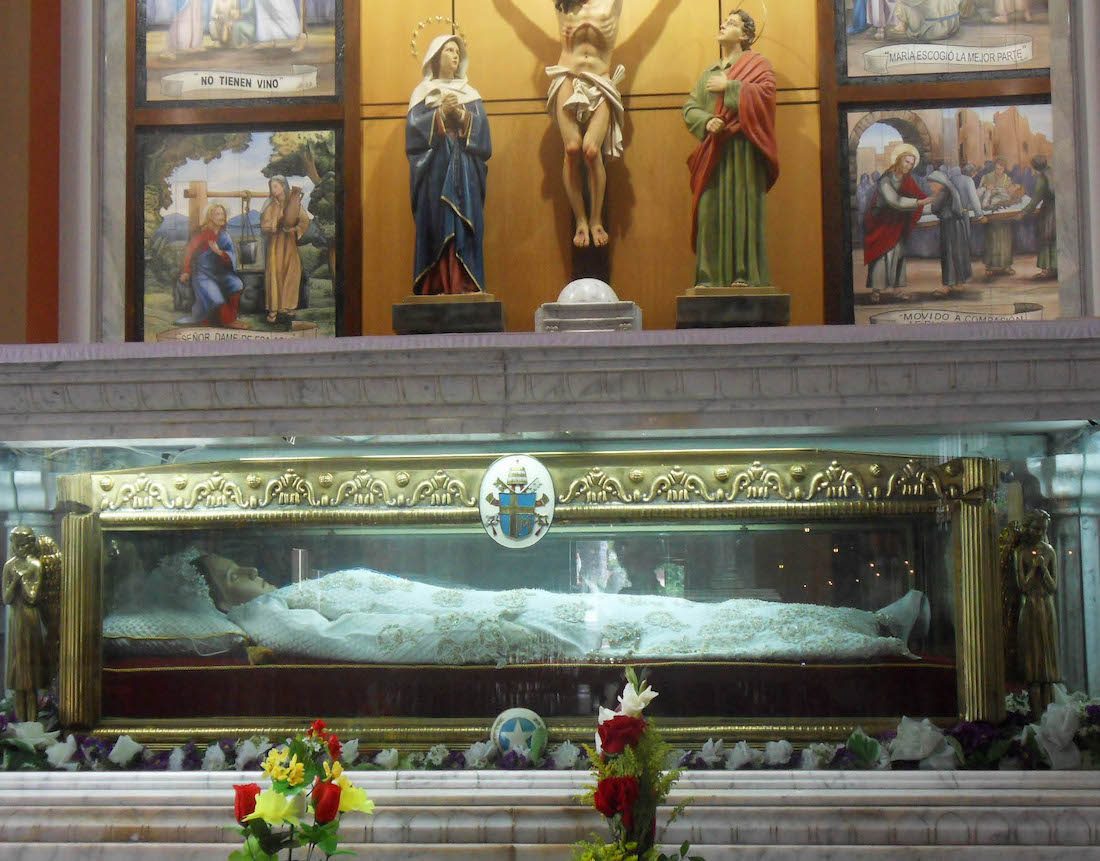
Born Narcisa de Jesús Martillo Morán, St. Narcisa (October 1832 – December 1869) was an Ecuadorian virgin known for her charitable giving, strict devotion to Jesus Christ and austere life of prayer and penance. A seamstress by trade, she cared for the sick and poor before joining the Third Order of Saint Dominic in Patrocínio Peru. She was beatified in October 1992 after the approval of a miracle and canonized in October 2008 by Pope Benedict XVI in St. Peter’s Square. Photo by Teresa Bergen
Believing in Miracles
Pope Francis has canonized 911—by far the most saints ever canonized by a single pope. This number seems inflated because 813 of them were one group, the Martyrs of Otranto. Mostly fishermen, shepherds, artisans and farmers, they were beheaded in 1480 in southern Italy for refusing to convert to Islam.
Miracles are difficult things to track. Mireles shed some light on the process. First, the shrine requests that visitors and social media followers ask Blessed Stanley to pray for them, for example for healing from cancer. Miracle documentation starts with self-reporting by the person who asked for the miracle.
“We have on our website where folks can go on and record if they think that there may have been a miracle,” Mireles says. “If there’s something that’s valid, then it’s elevated to the point where the archdiocese starts to move documentation to the Vatican.” Stanley already has a leg up in the saints race; martyrs only require one documented miracle, instead of two, to attain full sainthood.
Pride in a local saint is tied to pride in the community. Mireles believes people relate to Blessed Stanley. “He’s an American kid who was a farmer, who loved to tinker with motors.” If Rother is named to sainthood, it will be a very proud moment for Oklahoma.
People love firsts. Blessed Stanley is the first American-born martyr. Pope Benedict canonized Kateri Tekakwitha, the first Native American saint, in 2012. Vatican watchers are still waiting for the first American-born Black saint to be canonized. The six front-runners include New Orleanian Henriette DeLille (1813-1862), founder of the Sisters of the Holy Family, the second oldest order of U.S. Black nuns. DeLille was a free person of color devoted to the religious education of slaves. She attended Saint Augustine Church in New Orleans’ Treme neighborhood. Like other candidates for first American-born Black saint, DeLille is stuck in the venerable category—the term for somebody who has been declared heroic in virtue but has no proven miracles yet. When I visited Saint Augustine Church in 2016, church secretary Linda Harris seemed resigned to the long process of sainthood. “We do believe, and we pray,” she told me.
Traveling Inward
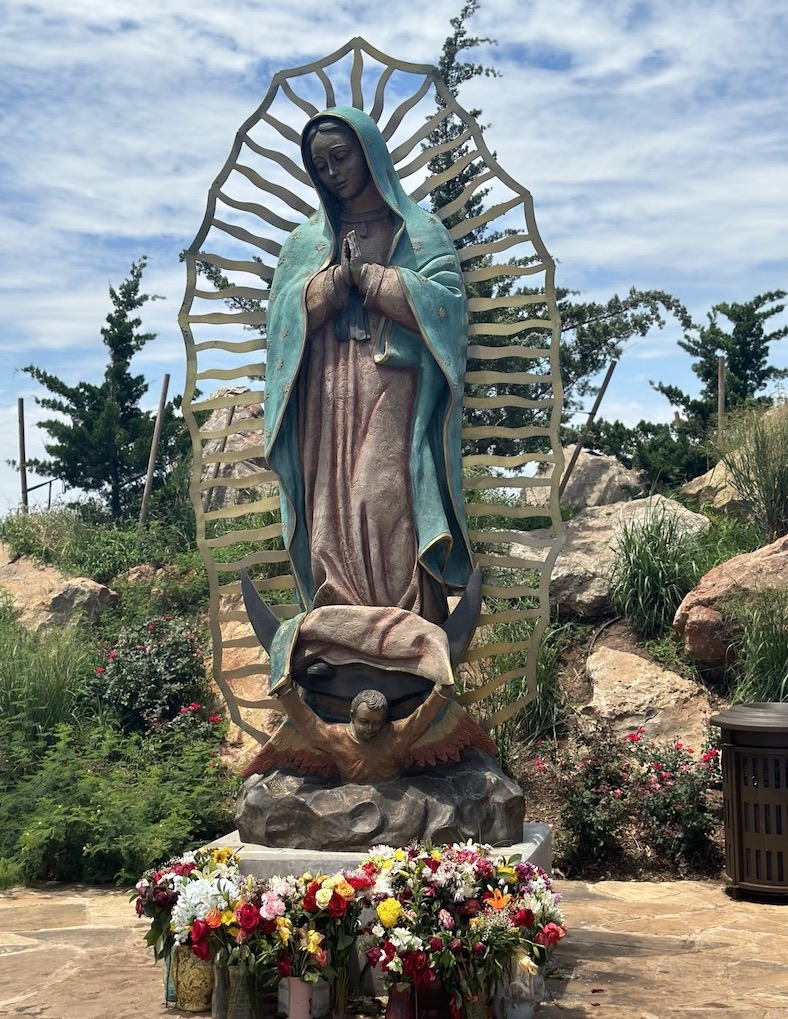
The Blessed Stanley Rother Shrine in Oklahoma City also has a shrine to the Virgin of Guadalupe at the top of a steep hill. Photo by Teresa Bergen
I’ve been visiting shrines for as long as I can remember. I’ve scooped the sacred dirt of Chimayo, New Mexico into a condiment container and stared at the supposedly uncorrupted corpse of Saint Narcisa outside Nobol, Ecuador. “The whole point of pilgrimage is to step away from the daily life that you live and bring yourself into a different space, a different frame of mind. And just resting with God,” Bezak observes.
The glorification of suffering is part of a Catholic upbringing, so maybe that’s why I feel like I get bonus points for a pilgrimage that is not too comfortable. After an easy Uber ride to the air-conditioned Stanley Rother Shrine, I embark on a mini-pilgrimage within a pilgrimage: ascending the shrine’s replica of Tepeyac Hill, where Our Lady of Guadalupe appeared to a Mexican peasant in 1531. The original Tepeyac Hill is on the northern edge of Mexico City and is an extremely popular pilgrimage site. The replica hill at the Rother shrine is to bring spiritual joy to two predominantly Latino parishes using the shrine as their new home church.
Sure, it’s a reproduction, but it’s a real hill. As I step outside the shrine building at one PM in the blazing July Oklahoma sun, the heat engulfs me. I trudge up the hot hill and admire a 4,400-pound painted bronze statue of Our Lady of Guadalupe. The shrine is new and shiny, but whether hiking the 500-mile Camino de Santiago or summiting a small hill in the Oklahoma summer heat, we pilgrims carry on a very old tradition that is rooted in many of our psyches: the urge to surmount something and then look inward to see if we have somehow changed.![]()

